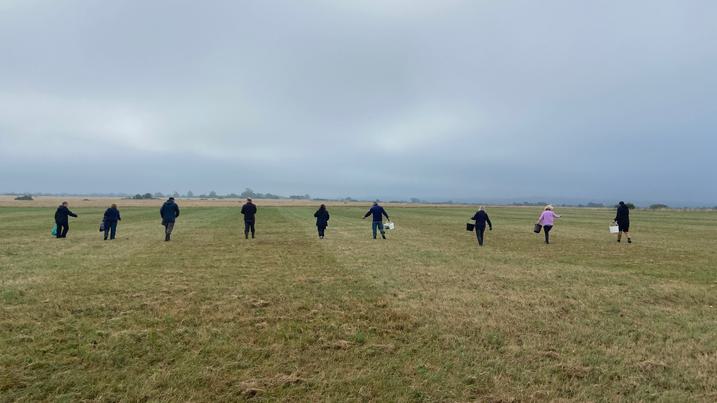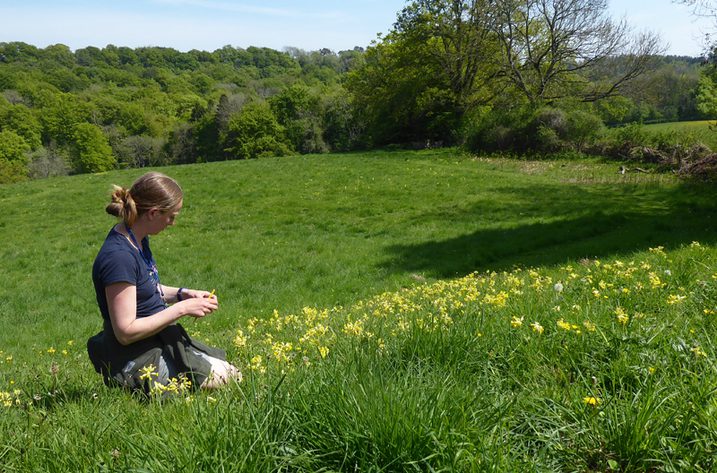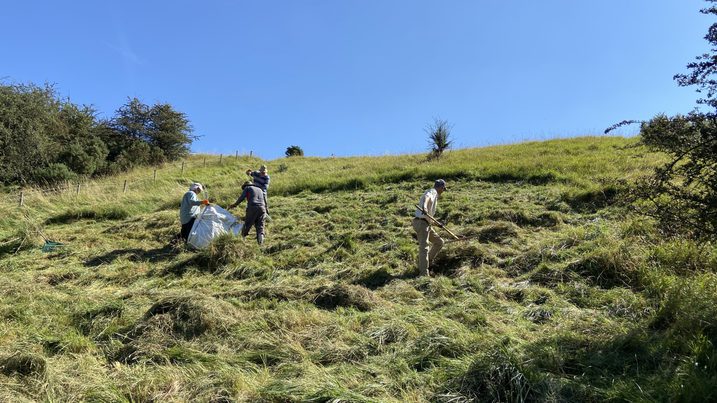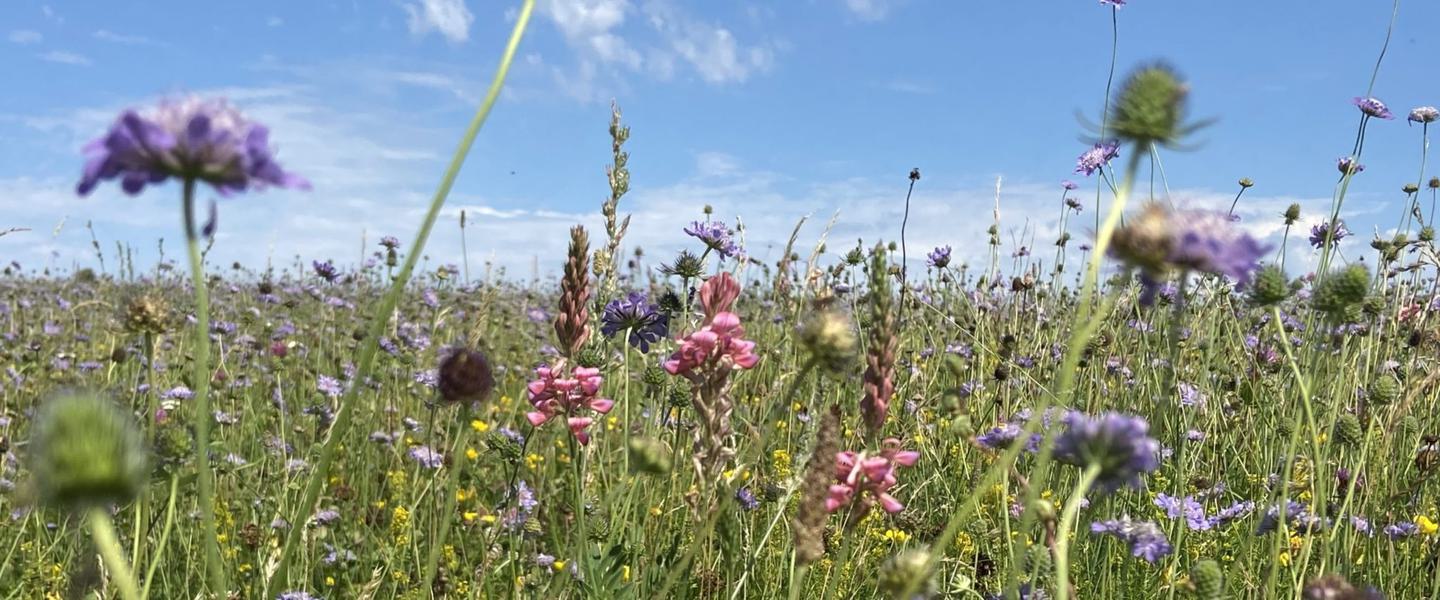In a nutshell...
Funding: £159,300*
Length: 3 years
Location: Cotswolds National Landscape
Aim: To reverse the decline of wildflower meadows, increasing biodiversity and creating routes and networks for wildlife to move through these resilient habitats in the face of climate change.
Opportunities: Corporate visit days, corporate volunteering
*subject to additional management fees.

The opportunity
The Cotswolds is perhaps one of the most iconic British landscapes, associated with pristine beauty and quintessential English charm. But it needs your help.
A wildflower grassland is one of the finest places on earth to lay in the sunshine, listening to the hum of insects and watching the butterflies sore overhead. And yet the UK has lost 97% of its wildflower meadows since the 1940s.
Coverage in the Cotswolds National Landscape has shrunk from 40% to only 1.5% due to changing land management practices, so in 2019, the Glorious Cotswold Grasslands project embarked on creating the largest network of wildflower-rich Jurassic limestone grassland in the United Kingdom.
In the first 6 years of the project, over 450ha of wildflower-rich grassland has been restored across the Cotswolds, but there is still plenty more to do. Your support is needed to keep this incredible work going!
These gorgeous meadows can aid water capture and percolation, helping replenish local aquifers. As meadows are restored, they will capture carbon and improve water quality through better soil health and reduced requirement for fertilisers.

The project
Throughout summer, an enthusiastic group of volunteers gather to help collect seed from species-rich wildflower meadows using vehicle-town brush-seed harvesters.
In late summer, the experienced Cotswolds National Landscape team collaborate with landowners to spread the collected seed on local, carefully prepared sites to restore species-rich grassland.
All this work is underpinned by rigorous botanical surveying to match donor and receptor sites, ensuring best practice in terms of suitability, local provenance and scientific evidence for project success.
During the winter months, a volunteer habitat management group help to restore valuable remnants of ancient wildflower grassland on sites across the Cotswolds that are becoming thatched with grasses and/or encroached by scrub.
These carefully-targeted workdays are helping some of our most endangered species such as fly orchid and duke of burgundy butterfly.
Creating, restoring and improving these species-rich habitats is essential to the ecological network our wildlife needs to flourish and adapt to climate change.

Your business can support the return of these flower-rich, biodiverse grasslands across the Cotswolds, whilst improving wellbeing and water-quality.
Simon Smith
Nature Recovery Lead
Cotswolds National Landscape
The potential
This project gives you the opportunity to support a dedicated and experienced team in restoring and expanding these rare and beautiful limestone wildflower meadows across the Cotswolds National Landscape.
You and your colleagues are welcome to join in and help spread these seeds of the future. Imagine looking at one of these colourful fields in full-bloom. The added benefits of soil health and water quality improvements are the icing on the cake.

Key outputs
Funding this project will facilitate:
- The organisation of a large pool of volunteers
- Restoration of up to 15 ha of meadow grassland per year for three years (45 ha total)
- Habitat management work on up to 10 meadow sites per year, for three years
- The recovery and protection of a culturally and historically-significant feature of the Cotswolds
- Volunteering opportunities to help with botanical surveys, seed harvesting, seed spreading and winter habitat management.
- Improved water quality and capture.
- Biodiversity: Increasing wildflower diversity and supporting the wide array of invertebrates, pollinators, mammals and birds that depend on these hugely rich habitats.
Partner organisations
Our work is currently funded through partnerships with a number of funders including a national infrastructure agency, water companies, agricultural support schemes and other grants.
Interested in discussing this project?
Reach out to our team today.



